Why apricot, the culture is growing rapidly enough, you need to feed, and even in the fall, when it retires?
Then, that bring her not to decorate the site - from her are waiting for the fruit. And the highest quality and in increasing quantities. And where to get the substances to create them? Only from the ground under the tree.
Table of contents
Features of growing apricot garden
Fruiting is the seasonal extraction of several dozen kilograms of nutrients from the soil. The extraction is almost irrevocable, with the inevitable soil depletion.
In the wild, the main natural feeding apricot is the pulp of its own rotted fruit and its own fallen leaves.
Under the conditions of culture, a person takes for himself the first, carefully scooping and burning the second. But even being left as a fertilizer, leaf litter compensates for the ever increasing needs of the tree. unable.
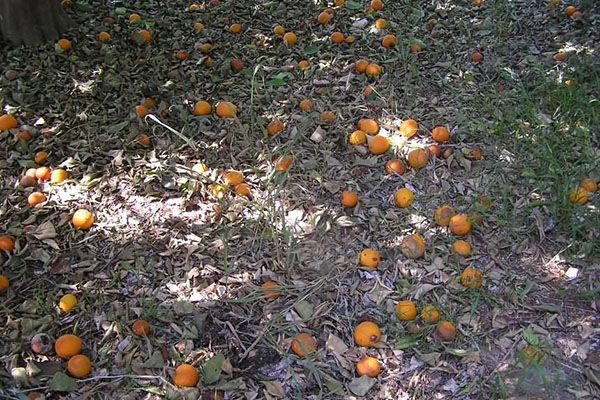
At the same tree, not enough fed, all the power goes into building up the green mass to the detriment of flowering. In addition, it is more susceptible to moniliasis and other fungal infections. Therefore, his needs have to be met artificially.
Why you need to feed in the fall
And there is a drug - urea (carbamide) - providing both of these actions, but at different times. Caught in the cracks of the bark when spraying in the fall, it:
- spring will give nutritional effect;
- in autumn, it will quickly exterminate the pests that have settled in it and compact the bark, protecting the tree from frost.
The nuances of the feeding
These include the presence of compounds of potassium, phosphorus, calcium, and the minimum amount of nitrogenous substances — nitrogen is necessary for apricot only during the growing season of shoots and leaves. But it must be embedded in the soil long before the start of the season.
The only acceptable nitrogenous fertilizer for winterizing is ammonium nitrateapplied to a depth of no less than 10 cm.
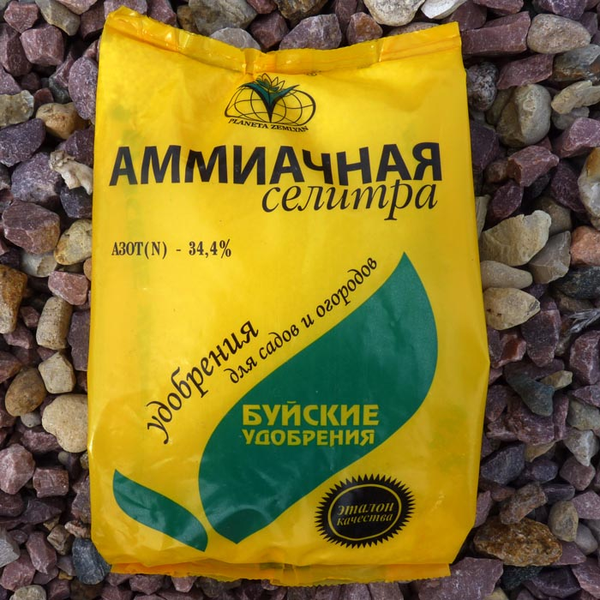
The soil when making compositions under the roots should be loose, wet and warm - already frozen soil should not be touched.
Time for autumn feeding is time shortly after leaf fall. For if you sprinkle urea on the leaves and the crust that did not manage to condense on thin branches, this will cause them to burn, affecting the quality of the wintering.
For autumn fertilizer can be applied trunk whitening method and skeletal branches of the composition obtained by kneading from:
- cow manure (1 kg);
- clay (1 kg);
- lime (2 kg);
- copper sulphate (400 g);
- water (10 l).
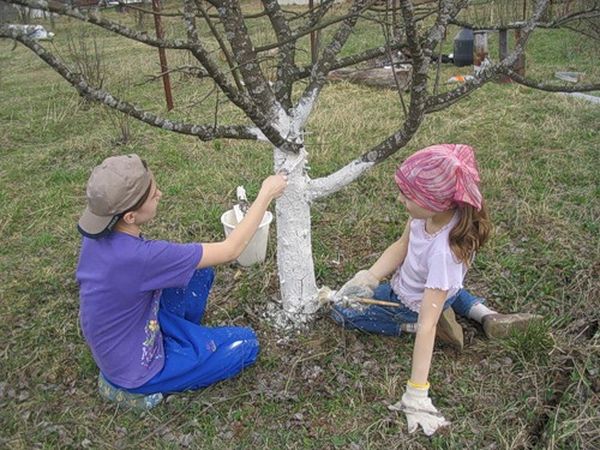
The foliar application includes the scattering of dry substances on the soil surface (ready-made fertilizers) or the layout of organic matter.
But the main and most effective is root feeding method - with the introduction of a nutrient solution into the soil directly under the roots (with the infusion of a liquid composition into the groove in the stalk zone). Root top dressing is combined with abundant pre-winter irrigation of apricot trees.
Types of fertilizers and terms of introduction
It is possible to apply both ready-made mineral complexes and fertilizers of own production: rich in potassium and phosphorus. wood ashcalcium in the composition chalk.
No less important is the organic, imitating dressing leaf litter with its natural balance of trace elements.
The organics (in the form of digging up the old manure or compost) are required for the trees:
- 2-3 years old about 15;
- 4-5 years to 30;
- 6-8 years old about 40-50;
- 9 years old and moreover up to 80 kg.
For apricots of even more respectable age, the volume is calculated individually, depending on the situation assessed by the state of the leaves.
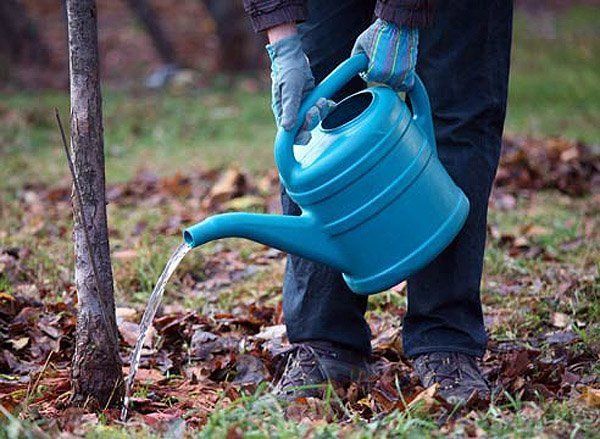
Accordingly, the mineral allowance in autumn (in the form of a solution or spreading on top) for a tree will be:
- 2-3 years of age: phosphorus in terms of superphosphate 130, potassium in recalculation for potassium chloride 40, ammonium nitrate 60 g;
- 4-5 years: superphosphate 200, potassium chloride 60, ammonium nitrate 100 g;
- age of 6-8 years: superphosphate 310, potassium chloride about 140 g, ammonium nitrate 210 g;
- 9 years and older: superphosphate 880, potassium chloride 250, ammonium nitrate 370 g.
Give a good effect granular nutrient compositions, introduced into the near-trunk zones and gradually dissolving in the autumn rains (or pre-winter irrigation), creating a depot of trace elements in anticipation of the new season.
Folk methods
Depending on the nature of the soil, the application can be applied:
- egg shellrich in silicon, magnesium, phosphorus, calcium (in the form of leaven or burnt) - to reduce the acidity of the soil;
- sawdust with sand - for clay soils for greater looseness and lower humidity;
- peat - on sandy soils;
- yeast or bread sourdough - to enhance future crop growth and increase future yields.Fermented yeast during the day (1 kg / bucket of water) is used by diluting with water in a ratio of 1: 5 and watering the trees.
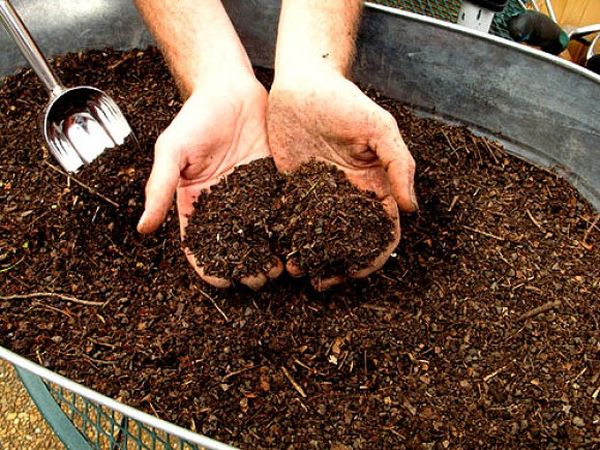
How balanced natural fertilizer can be applied combinations of compost with sea or river algae, as well as chicken litter and various types of manure:
- horse;
- cow;
- sheep;
- pork.
When compiling a fertilizer composition, it is necessary to take into account the dynamics of cultural development in the past season, its age, as well as the nature of the soil and climate.
